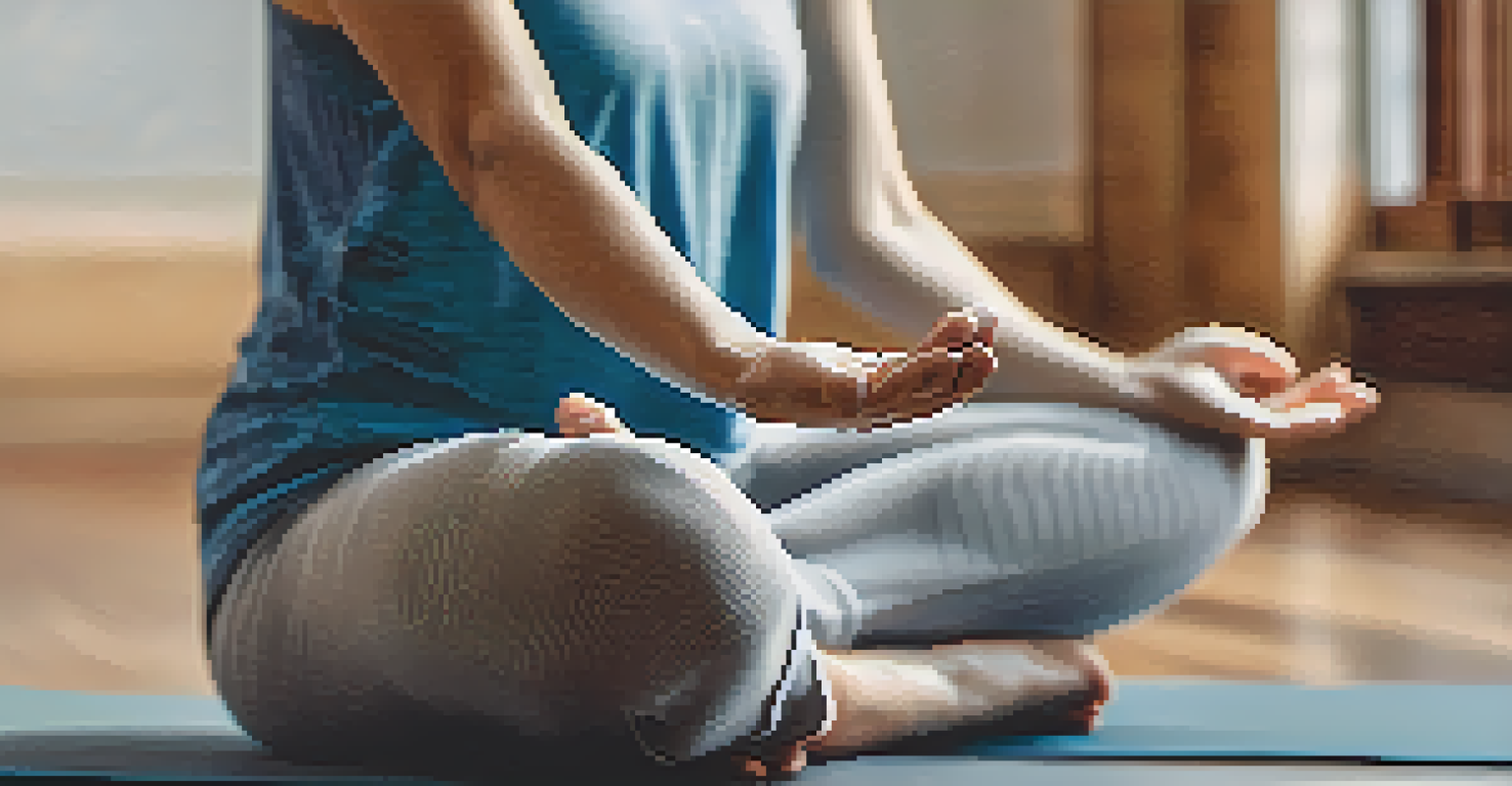Using Yoga to Develop Assertive Communication Skills

Understanding Assertive Communication in Everyday Life
Assertive communication is speaking your truth confidently while respecting others. It’s the middle ground between being passive and aggressive. This skill is essential in personal and professional relationships, helping you express needs without fear.
The greatest weapon against stress is our ability to choose one thought over another.
For instance, imagine you're in a meeting where your ideas are overlooked. Instead of silently fuming or snapping at colleagues, assertive communication empowers you to voice your thoughts clearly. This balance fosters healthier interactions and prevents misunderstandings.
By practicing assertiveness, you cultivate self-respect and establish clear boundaries. This is where yoga comes in, as it encourages self-awareness and mindfulness, which are crucial for effective communication.
The Connection Between Yoga and Communication Skills
Yoga goes beyond physical postures; it’s a holistic practice that enhances mental clarity. Through various techniques, such as breath control and meditation, yoga helps you connect with your inner self. This connection is vital for expressing yourself assertively.

Think of yoga as a tool that calms the mind and opens the heart. When you practice yoga, you become more attuned to your feelings, needs, and desires. This awareness translates into your interactions, making you more confident in expressing your thoughts.
Assertive Communication Defined
Assertive communication allows you to express your needs confidently while respecting others, striking a balance between passivity and aggression.
Moreover, yoga teaches you to listen, both to yourself and to others. This active listening is a cornerstone of assertive communication, allowing you to respond thoughtfully rather than react impulsively.
Breath Control: The Foundation of Assertive Expression
One of the most powerful tools in yoga is breath control, or pranayama. This practice not only calms the mind but also enhances your vocal expression. When you breathe deeply, you engage your diaphragm, leading to a stronger, more confident voice.
Your communication is a reflection of your inner self. The more you know yourself, the better you can communicate.
For example, before speaking in a challenging situation, take a few deep breaths to center yourself. This simple act can significantly reduce anxiety and empower you to articulate your thoughts more clearly and assertively.
Incorporating breath control into your daily routine can enhance your communication skills over time. It helps you manage emotions and maintain composure during difficult conversations, making assertiveness feel more natural.
Mindfulness Yoga Practices for Better Communication
Mindfulness is a cornerstone of yoga, and it plays a crucial role in improving communication. Practicing mindfulness helps you stay present, which is vital in conversations. When you are fully engaged, you are more likely to respond assertively rather than reactively.
Consider incorporating mindfulness exercises, such as body scans or mindful listening, into your yoga routine. These practices encourage you to focus on the moment, making it easier to express your needs clearly and respectfully.
Yoga Enhances Communication Skills
Practicing yoga fosters self-awareness and mindfulness, which are essential for expressing yourself assertively in various interactions.
Over time, this increased presence enhances your ability to communicate assertively. You’ll find yourself more attuned to both your feelings and those of others, fostering a more harmonious dialogue.
Postures That Promote Confidence and Assertiveness
Certain yoga postures, or asanas, can boost your confidence and assertiveness. For instance, poses like Warrior I and II open the heart and shoulders, symbolizing strength and courage. Practicing these poses can physically and mentally prepare you for assertive communication.
When in these postures, visualize yourself in a situation where you need to assert yourself. Feel the strength of the pose translate into your voice, helping you express your thoughts with conviction.
Regularly incorporating confidence-boosting poses into your practice creates a sense of empowerment that spills over into your daily life. You’ll become more comfortable standing your ground and voicing your opinions.
The Role of Self-Reflection in Assertive Communication
Yoga encourages self-reflection, allowing you to assess your communication style. After each practice, take a moment to reflect on your interactions throughout the day. Consider what went well and areas for improvement in your assertive communication.
For example, you might realize you tend to shy away from expressing your needs in group settings. This awareness is the first step toward change, helping you develop strategies to communicate more assertively next time.
Breath Control Boosts Confidence
Incorporating breath control techniques from yoga can calm your mind and empower you to articulate your thoughts more clearly during challenging conversations.
By regularly engaging in self-reflection, you create a feedback loop that reinforces your growth in assertiveness. This practice helps you stay committed to becoming a more effective communicator.
Integrating Yoga into Your Communication Routine
To effectively use yoga for enhancing your assertive communication, create a routine that blends both practices. Start each day with a few yoga poses, focusing on breath and mindfulness. This sets a positive tone for your interactions throughout the day.
Additionally, consider setting aside time for mindfulness meditation focused on communication. Visualize yourself engaging in assertive conversations, reinforcing the skills you’ve developed through yoga.

Ultimately, integrating yoga into your daily life not only enhances your physical flexibility but also your communication flexibility. With practice, you’ll find yourself navigating conversations with greater ease and confidence.